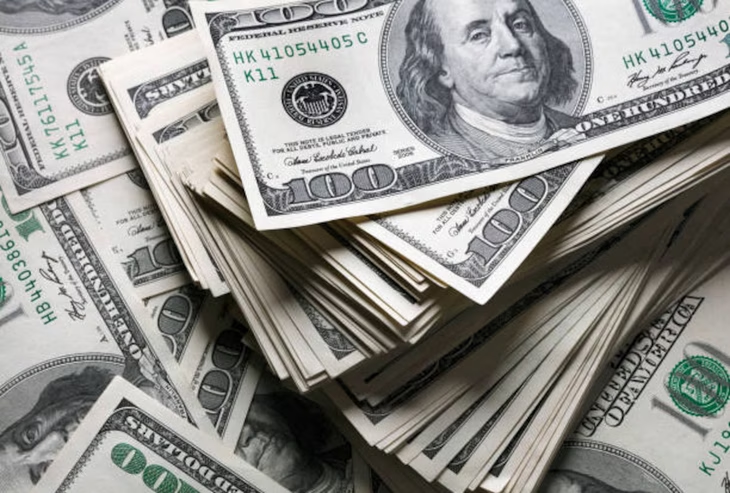Scope It was born in 1976 as a bulletin that every day reported the interest rates that banks paid for fixed-term deposits. That newsletter was in high demand because people made fixed-term deposits at high rates. The success of this information was such that it later became the most influential newspaper in economic and political matters.
In the 48 years that have passed since Ámbito was born (first was Ámbito Financiero), several governments have passed and almost all of them have given rise to what we are experiencing today.: the game of delaying the exchange rate so that people sell their dollars, with the pesos they receive make a fixed-term deposit and bet that in the period that they have their money in a fixed term the interest rate will beat them to the dollar.
We saw this in the period of the exchange rate table in the 70sthen with the spring plan in 1988 that ended in the crisis of February 6, 1989 and hyperinflation.
Domingo Cavallo Former Minister of Foreign Affairs of the Argentine Nation
Domingo Cavallo established convertibility in April 1991.
Mariano Fuchila
It was repeated in 1990, after the BONEX planwhen the interest rate was raised and the exchange rate remained stable at 5,500 australes that year, while inflation remained at levels that greatly exceeded the interest rate, but the dollar remained stationary. That caused the real exchange rate to fall until those who bet on the rate said enough and bought dollars again.
Another exchange and financial explosion that caused the then economy minister to resign Erman Gonzalez and replace it Sunday Cavallo which in April 1991 established convertibility.
Convertibility that lasted until December 2001when it falls Fernando De la Rua and in January with Eduardo Duhalde During the presidency, convertibility was abandoned, pesification was adopted and the exchange rate was once again delayed until In 2011 Cristina Kirchner established the stocks.
The difference with previous cases was that, instead of devaluing the peso, Cristina Kirchner established rationing of who could buy dollars at the official exchange rate.
Dollars

Since the rodrigazo occurred in 1975, the Argentine adopted the dollar as a reserve currency of value.
Let us clarify that the stocks are nothing other than the rationing established by supermarkets when maximum prices are imposed. You go into the supermarket and they sell you 1 liter of oil per person, a kilo of sugar per person, etc.
That trap was eliminated with Macri that the game of betting at the rate that beats the dollar is back, this time with the LEBACs, until In April 2018 everything blew up and the stocks ended up being established at the end of Macri that It continued throughout the government of Alberto Fernández and now with Javier Milei.
The curious thing is that that bet that the rate will beat the dollar always ended badly and today, after 48 years, we see that this bet that is now called “carry trade” is being insisted on.
Since the rodrigazo occurred in 1975, the Argentine adopted the dollar as a reserve currency of value. This implies that whoever sells dollars to do “carry trade”, by definition, at some point dismantles their fixed term in pesos and buys the dollars again.
The point to consider is that if someone sells US$1,000,000 to get pesos and earns 20% in interest rate in dollars. If the dollar remained still, when the investor makes the profit and buys dollars, he does not go out to demand US$1,000,000, he goes out to demand US$1,000,000 plus the interest earned. That is, the pressure on the exchange market is not for US$1,000,000 but rather for US$1,200,000.
The question that arises towards 2025 is, at what point will investors realize the profit? And when they make the profit, the story will end as it has ended in the last 48 years. Unless someone maintains that Argentines are going to have a fit of confidence in the peso or that Trump is going to lend Milei US$15 billion so that investors can exit the “carry trade” without the rate jumping of change.
If this last case occurs, we would be faced with an act of immorality given that society as a whole would have to pay the debt of US$15,000 million so that those who bet on the rate can leave without making losses.
We taxpayers would be a kind of insurance company that would be assuring the profit of those who bet on the “carry trade.”
In short, 48 years have passed since Ámbito was founded, in those 48 years different governments used the “carry trade” to give temporary tranquility to the exchange market and use the exchange rate as an anchor against inflation and that recipe always failed.
Argentina is like Groundhog Day. We repeat the same mistake all the time and we expect it to have a different result at some point.
We will see if this story repeats itself in 2025 or 2026. The longer it takes to dismantle the “carry trade”, the more complicated the exit will be.
Journalist and economist
Source: Ambito
I am Pierce Boyd, a driven and ambitious professional working in the news industry. I have been writing for 24 Hours Worlds for over five years, specializing in sports section coverage. During my tenure at the publication, I have built an impressive portfolio of articles that has earned me a reputation as an experienced journalist and content creator.




